From chimpanzees waging war over territory to parrots outperforming Harvard students in memory tests, many animals display remarkably human-like behaviors. While humans often consider ourselves unique, with abilities and behaviors far more complex than those of our distant animal relatives, many creatures—from tiny insects to our closest living kin—showcase an astonishing range of behaviors that can seem uncannily human. Elephants mourn their dead, bees become pessimistic when encountering setbacks, and these are just a few examples of the most human-like behaviors observed in the animal kingdom.
Chimpanzees

Chimpanzees (Pan troglodytes), together with bonobos, hold the title of our closest living relatives. A groundbreaking study in 2018 uncovered that chimpanzees exhibit the same five core personality traits as humans—conscientiousness, openness, agreeableness, extraversion, and neuroticism—and that these traits might influence their longevity. The study revealed that more agreeable male chimpanzees tend to forge stronger social bonds and enjoy longer lives.
In 2020, research published in the journal Science highlighted the concept of social selection among aging male chimpanzees, who showed a marked preference for deeper social connections with a smaller circle of older companions. This pattern is strikingly similar to that of older human adults, who often opt for enduring friendships and more intimate social groups. Another intriguing study demonstrated that chimpanzees, much like young children, imitate human actions such as waving, clapping, and kissing. Furthermore, chimpanzees engage in territorial conflicts reminiscent of human warfare to expand their domains.
Gorillas: 32 Instances of Shockingly Human Behavior

Gorillas are another large primate that demonstrates striking human-like traits. Research has shown that gorillas exhibit the five major personality traits seen in humans—conscientiousness, openness, agreeableness, extraversion, and neuroticism—both in the wild and in captivity. They communicate using facial expressions and gestures, and they experience emotions such as joy, empathy, and sadness. A 2016 study of gorilla behavior revealed distinct personality differences among various gorilla populations. Additionally, cultural traits—typically considered a hallmark of human behavior—were found to vary among five groups of gorillas, including mountain gorillas (Gorilla beringei beringei) and western lowland gorillas (Gorilla gorilla gorilla), across different African habitats.
Bottlenose dolphins

Dolphins are renowned for their intelligence and sociability. A 2021 study discovered that bottlenose dolphins (Tursiops truncatus) share personality traits with humans and other primates, such as openness, sociability, and disagreeableness. Interestingly, researchers identified a fourth personality trait unique to dolphins, called directedness, which combines aspects of low neuroticism and conscientiousness.
Blake Morton, a psychology lecturer at the University of Hull in the U.K., noted, “Throughout our lifetime, we interact and form relationships with a wide variety of people—dolphins do the same with each other. Collectively, being smart and social, regardless of the ecosystem you live in, may play an important role in the evolution of certain personality traits.”
Asian elephants

Asian elephants (Elephas maximus) showcase numerous human-like traits, thanks to their large brains, high intelligence, strong social bonds, and empathetic behavior, including remarkable facial recognition abilities. In 2006, researchers discovered that elephants, like humans, can recognize themselves in a mirror. Moreover, a 2015 study by a separate research team revealed the extraordinary long-term memory capacity of elephants.
In 2009, a study unearthed evolutionary evidence suggesting that genes influencing brain function, energy utilization, and metabolism have undergone similar changes in large-brained mammals like elephants and humans. Furthermore, a 2023 study shed light on an intriguing parallel: elephants, much like humans, have undergone a process of self-domestication over evolutionary time. This process, driven by cultural and societal structures, has contributed to heightened sociability and reduced aggression among elephants over generations.
Magpies
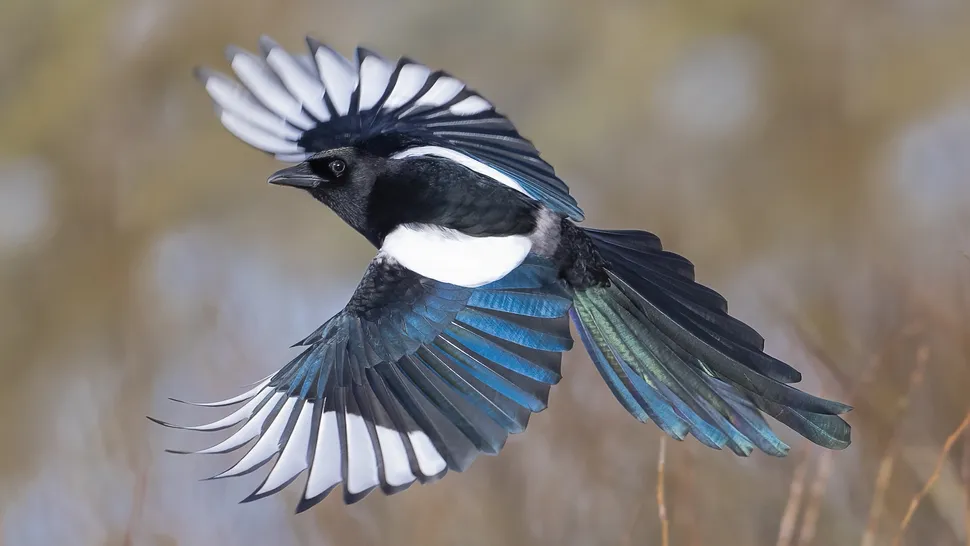
Similar to humans, magpies, belonging to the crow or corvid family, exhibit remarkable cognitive abilities. They can craft and employ tools to nourish their offspring and even mimic human voices. Additionally, a study unveiled evidence suggesting that European magpies (Pica pica) possess self-recognition capabilities, as they can identify themselves in a mirror.
Eurasian jays

Dubbed “feathered apes” due to their cognitive prowess rivalling that of nonhuman primates, Eurasian jays (Garrulus glandarius) are esteemed members of the corvid family. They exhibit remarkable intelligence, capable of learning tool usage and displaying exceptional self-restraint. A recent 2022 study delved into their self-control abilities, akin to the famous “marshmallow test” in humans. In this avian adaptation, Eurasian jays demonstrated the capacity to resist immediate gratification, opting to delay consuming mealworms. Intriguingly, the jays exhibiting the highest levels of self-control also excelled in intelligence assessments, underscoring the intricate relationship between cognitive abilities and self-discipline in these remarkable birds.
Orcas

Orcas (Orcinus orca), commonly known as killer whales, are renowned for their strong social bonds and tight-knit family structures known as pods. Within these pods, they engage in a myriad of complex behaviors including hunting, food sharing, communication, and socialization, showcasing advanced cultural and personality traits.
In a study observing 24 captive orcas, researchers made an intriguing discovery: similar to humans and chimpanzees, orcas exhibit the personality trait of extraversion, evident through their playful demeanor and displays of affection. However, subsequent research has highlighted the detrimental effects of captivity on orcas’ behavior, leading to increased aggression and neuroticism, underscoring the profound impact of environment on their well-being and social dynamics.
Rats

In a notable 2011 study, researchers uncovered evidence of prosocial behavior in rats. Through observations, scientists documented instances where one rat would assist another by freeing it from confinement. Remarkably, the liberating rat seemed to share the emotional distress of its trapped counterpart, demonstrating a form of empathy. Strikingly, these acts of altruism occurred without any apparent reward for the rescuing rat.
However, a subsequent 2014 study proposed an alternative explanation. It suggested that the motivation behind the rescue behavior might stem from a desire for social contact rather than empathetic concern for the trapped rat. This debate underscores the complexity of animal behavior and the various factors influencing seemingly altruistic actions.
An earlier experiment dating back to 1958 further shed light on rats’ social dynamics. In this study, rats were only allowed access to food if they administered electric shocks to their fellow rats. Astonishingly, the rats refused to engage in this harmful behavior, indicating a capacity for empathy and compassion among these often-misunderstood creatures.
Dogs

A fascinating 2018 study, published in the journal Learning and Behavior, unveiled a remarkable aspect of dogs’ behavior: their ability to empathize with distressed humans. In this experiment, conducted by researchers, dog owners simulated distress by either crying or humming behind a closed door. Astonishingly, the dogs demonstrated empathy by swiftly seeking to comfort the distressed individuals.
Interestingly, the study revealed a nuanced response among the dogs. Those who suppressed their own stress reactions to prioritize comforting the humans were the quickest to open the door. This finding underscores the depth of dogs’ emotional intelligence and their capacity for empathetic responses to human emotions.
Bluebirds
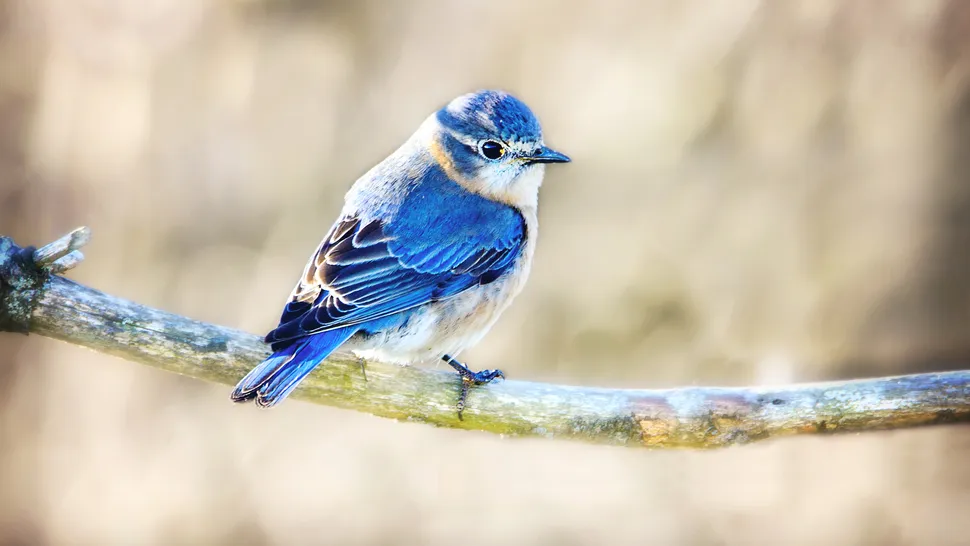
In a 1975 study published in The American Naturalist, researchers discovered intriguing behavior among male mountain bluebirds (Sialia currucoides) in response to perceived rejection during mating. When a male bluebird left the nest to forage, his female partner might seek companionship with another male. In such cases, the spurned male reacted with apparent jealousy, displaying aggressive behavior towards his partner.
The study documented instances where the jealous male bluebirds engaged in violent acts such as forcefully pulling out feathers and snapping beaks. This behavior sheds light on the complex dynamics of avian relationships and suggests that emotions such as jealousy may play a role in shaping mating behavior among mountain bluebirds.
Horses

Similar to humans, horses (Equus caballus) possess the ability to interpret facial expressions and discern human emotions. Much like dogs, horses often form strong bonds with their owners, fostering close relationships.
In a noteworthy 2018 study, researchers uncovered that horses exhibit cross-modal recognition of voices, facial expressions, and emotional states of both their primary caregivers and strangers. Ayaka Takimoto, an associate professor at Hokkaido University in Japan and co-author of the study, emphasized the significance of their findings, stating, “Our study could contribute to the understanding of how humans and companion animals communicate emotional signals, thereby enriching our relationships and prioritizing the well-being of animals.” This research sheds light on the intricate dynamics of human-animal relationships and underscores the importance of mutual understanding and empathy in fostering positive interactions.
Meerkats

Despite their adorable and fluffy appearance, female meerkats (Suricata suricatta) can be surprisingly ruthless, resorting to lethal aggression against female rivals. However, alongside this competitive nature, meerkats also exhibit nurturing behaviors, demonstrating a caring side.
Adult meerkats take turns babysitting young members of their group, dedicating time to imparting essential life skills to the younger generation. This human-like approach to child-rearing serves a strategic purpose in the meerkat community, allowing the dominant female to focus on breeding.
In a groundbreaking three-year study initiated in 2023, researchers are delving into the emotional lives of meerkats, investigating whether these creatures possess empathy akin to humans. The aim is to gain a deeper understanding of human-animal interactions and the complexities of emotional intelligence across species boundaries.
Domestic cats

While cats may not express adoration for their owners as overtly as dogs do, a 2021 study revealed their capacity to form bonds with humans, influenced by the emotional behavior of their owners. Additionally, a 2020 study found that cats (Felis catus) release the “bonding” hormone oxytocin when stroked, albeit to a lesser extent compared to dogs.
However, in terms of displaying complex human-like emotions, cats are more commonly observed exhibiting jealousy rather than empathy or compassion, as indicated by a 2016 study. This nuanced understanding of feline behavior sheds light on the multifaceted nature of the human-animal bond and underscores the distinct emotional dynamics between cats and their human companions.
Pigeons

Pigeons have demonstrated an impressive ability to comprehend numerous human words, with a 2016 study revealing their capability to distinguish up to 60 words. This groundbreaking research marked the first instance of a nonprimate exhibiting letter recognition and possessing an orthographical brain, enabling them to process and understand letters.
According to Damian Scarf, the lead author of the study and an associate professor of psychology at the University of Otago in New Zealand, these findings offer valuable insights into human brain development and cognitive skills. “Discoveries like this provide significant insights into the evolution of cognitive abilities,” Scarf stated. “By identifying such abilities in pigeons, we can infer that similar cognitive flexibility and plasticity were present in our common ancestor with pigeons, dating back approximately 300 million years. This suggests that the neurological foundations for language processing and statistical learning were established long before the divergence of human and avian evolutionary paths.”
Dragonflies

Similar to humans, dragonflies possess the ability to filter out extraneous information, allowing them to concentrate on specific tasks. This trait, observed in primates with their limited attentional capacity, requires individuals to prioritize tasks by focusing deeply on one or multitasking with reduced attention.
In a notable 2012 study, scientists unearthed evidence of dragonflies exhibiting a form of “human-like” selective attention during hunting. By utilizing a microscopic sensor within the dragonfly’s brain, researchers identified neural filtering activity. This neurological mechanism enabled the insect to achieve an impressive success rate of 97% in capturing prey. These findings shed light on the sophisticated cognitive abilities of dragonflies and highlight parallels between insect and primate behavior in attentional processes.
Honeybees

Scientists have discovered that honeybees, much like humans, exhibit a tendency towards pessimism following stressful experiences.
In a pioneering 2011 study, bees were presented with a choice between sugar or quinine solutions, accompanied by a mixture of odors, before being subjected to simulated predator attacks by shaking. The shaken bees exhibited reduced levels of the neurotransmitters dopamine and serotonin, typically associated with positive emotional states. These findings led researchers to suggest that bees may undergo experiences akin to negative human emotions as a result of stress. This research sheds light on the complex emotional lives of honeybees and underscores the importance of understanding their welfare in beekeeping and conservation efforts.
Cockroaches

Despite not commonly being associated with cleanliness, cockroaches exhibit a strong preference for self-hygiene and engage in incessant grooming behaviors.
According to a comprehensive 2013 study, cockroaches (Periplaneta americana) groom themselves extensively to maintain the efficiency of their antennae. This meticulous grooming routine is crucial for removing environmental pollutants and their own waxy secretions, which can impair the insects’ ability to detect pheromones, locate food sources, and perceive potential threats.
Coby Schal, an esteemed entomologist at North Carolina State University and co-author of the study, emphasized the importance of grooming for cockroaches. “The evidence strongly suggests that grooming is essential for regulating the levels of both foreign and native substances on their antennae,” Schal stated. “Failure to groom adequately essentially compromises the insects’ ability to perceive and navigate their environment effectively.” This research sheds light on the significance of grooming behaviors in cockroach ecology and underscores their adaptive strategies for survival in diverse environments.
Snakes
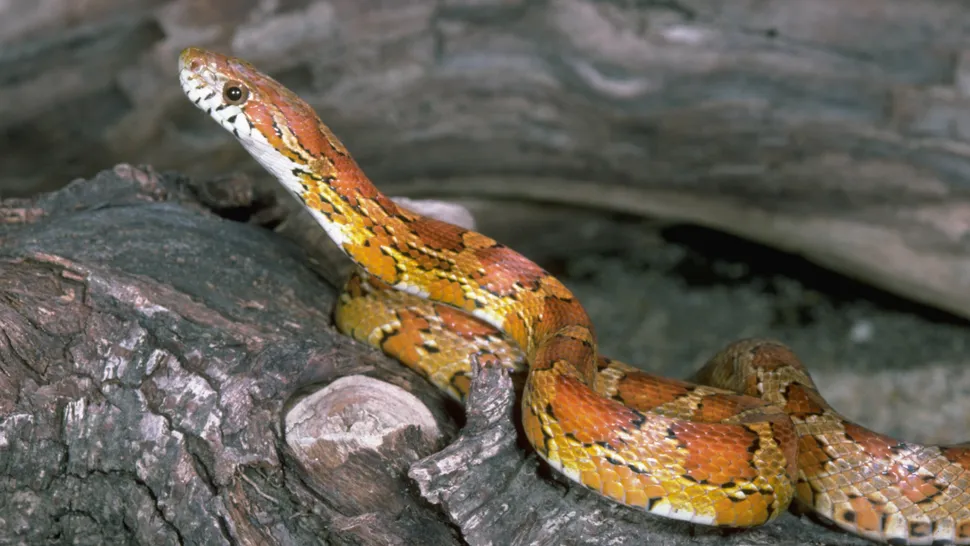
While snakes are typically perceived as solitary creatures except during mating, a compelling 2023 study published in the journal Frontiers in Ethology revealed intriguing social behavior in snakes reminiscent of human empathy. The study focused on adult southern Pacific rattlesnakes (Crotalus helleri), which exhibited signs of comforting behavior in response to stress experienced by another snake of the same species.
Remarkably, when a rattlesnake encountered a stressful situation involving another snake, its heart rate was observed to decrease compared to a snake that had not experienced such an encounter. This unexpected finding suggests a form of social support or comfort among rattlesnakes, akin to human responses in stressful situations.
These findings challenge traditional perceptions of snake behavior and highlight the complexity of social dynamics even in seemingly solitary species. Further research into the social behaviors of snakes could provide valuable insights into the evolution of empathy and cooperative behavior across diverse animal taxa.
Archerfish
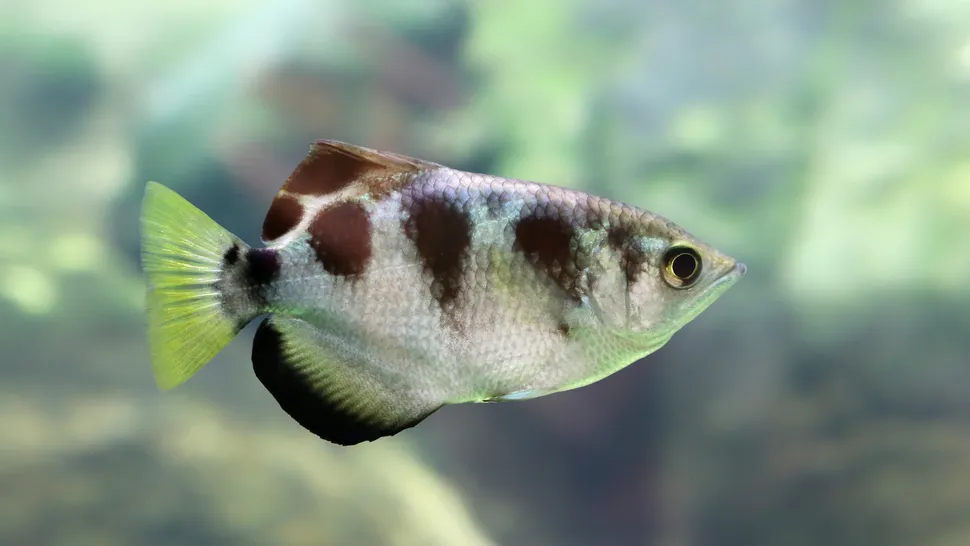
Facial recognition plays a pivotal role in the formation of intricate social connections, a skill mastered by humans as young as 2 months old.
Unlike primates, fish lack a large brain and visual cortex traditionally associated with image processing. However, the remarkable abilities of archerfish defy conventional expectations. In a groundbreaking 2016 study, scientists discovered that archerfish possess the capacity to learn and recognize human faces with remarkable accuracy.
Cait Newport, a researcher in the University of Oxford Department of Zoology and the lead author of the study, highlighted the significance of this finding: “The fact that archerfish can acquire this skill suggests that complex brains may not be an absolute requirement for the recognition of human faces.” This revelation challenges our understanding of neural complexity and underscores the diverse strategies employed by different species to navigate social interactions and perceive the world around them.
Japanese macaques

In a notable study conducted in 2024, researchers studying Japanese macaques (Macaca fuscata) made a fascinating discovery: nerve cells in the premotor cortex, responsible for preparing and executing limb movements, exhibited robust responses when engaged in tasks involving addition and subtraction.
This finding underscores the cognitive sophistication of Japanese macaques and suggests that they possess neural mechanisms capable of processing mathematical concepts, a trait previously thought to be unique to humans.
Moreover, in 2008, a group of captive Japanese macaques underwent training to use tools, revealing cognitive similarities with humans and highlighting the adaptability and learning capacity of these primates.
In a more recent study conducted in 2021, researchers found that Japanese macaques display a remarkable ability to respond to human gaze cues flexibly, depending on the context. This behavior suggests a high level of perspective-taking and understanding of others’ intentions among Japanese macaques, further emphasizing their complex social cognition.
Bonobos

Alongside chimpanzees, bonobos (Pan paniscus) are recognized as humans’ closest living relatives. Renowned for their peaceful coexistence in tightly-knit social communities, bonobos have garnered attention for their unique approach to social interactions, including their use of sexual behavior for greeting and conflict resolution, with both males and females engaging in such interactions.
A 2022 study revealed that bonobos, akin to humans, exhibit the capacity to foster harmonious relationships beyond their immediate social circles by offering assistance to individuals in need. However, recent research from 2024 suggests that their social dynamics may not always be entirely harmonious, as aggression between male bonobos has been observed.
These findings shed light on the complex social dynamics of bonobo communities, emphasizing the need for further research to deepen our understanding of their behavior and relationships within their social groups.
Humpback whales

Whales utilize song as a means to establish social bonds, locate mates, and communicate within their communities. Similar to humans, their musical preferences develop over time, with each whale species crafting its own distinctive song.
A comprehensive study in 2017 exploring cetacean culture and behavior revealed striking parallels between whales, dolphins, and humans. Across various species, these marine mammals exhibit tight-knit social structures, form alliances for mutual benefit, and engage in playful behaviors. Scientists attribute much of this complex social behavior to the remarkable size of whales’ brains.
These findings underscore the intricacies of cetacean societies and highlight the similarities in social dynamics shared between these magnificent creatures and humans. Further research into their social behaviors promises to deepen our understanding of the fascinating world of whales and dolphins.
Mockingbirds

A 2023 study revealed that female Northern mockingbirds (Mimus polyglottos) possess remarkable cognitive abilities, allowing them to not only recognize familiar humans but also assess the level of threat posed by each individual. This capability enables them to make quick decisions to protect their nest by fleeing to safety. The findings suggest that mockingbirds exhibit higher cognitive functions than previously believed.
This research builds upon the insights from a 2009 study, which demonstrated that wild mockingbirds have the capacity to remember specific individuals and distinguish between harmless and threatening humans. In response to perceived threats, these birds display defensive behaviors, such as chasing away individuals they perceive as dangerous.
Together, these studies highlight the sophisticated cognitive abilities of Northern mockingbirds and shed light on the complex interplay between avian intelligence and social behavior in the wild.
Cheetahs
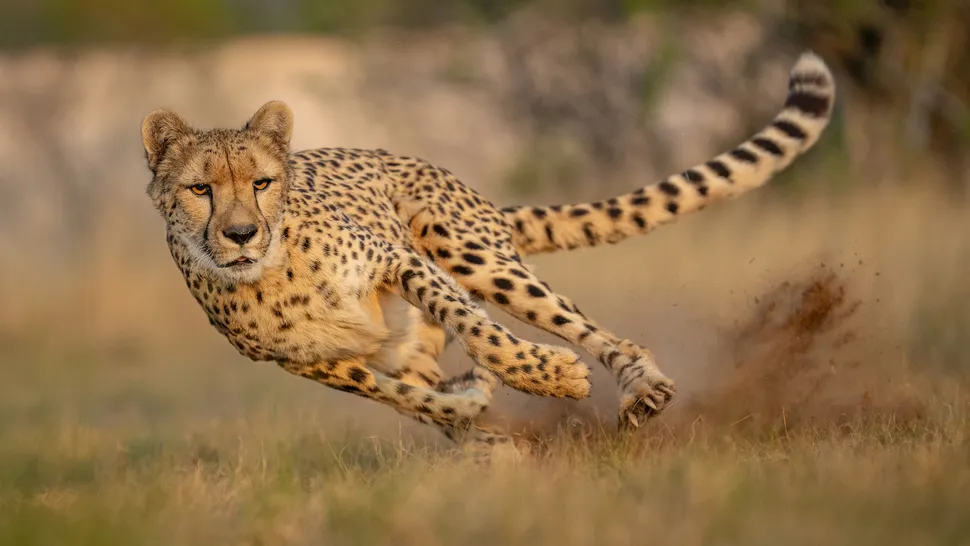
A 2024 study revealed that big cats, including cheetahs (Acinonyx jubatus), lions, and tigers, possess the ability to recognize human voices and distinguish them from unfamiliar ones. The study demonstrated that these feline species exhibited quicker and more intense reactions to familiar human voices, indicating their capacity for socio-cognitive abilities despite being less social compared to other species.
Furthermore, a separate 2018 study investigating captive and wild cheetahs corroborated these findings. It revealed that cheetahs not only recognized human voices but also discerned between familiar caregivers and strangers, adjusting their behavior accordingly. Even wild cheetahs exhibited the ability to recognize human voices, likely due to their close proximity to human habitats.
These studies offer valuable insights into the cognitive abilities of big cats, showcasing their capacity for complex social cognition and adaptation to human environments. Further research into the socio-cognitive capabilities of these magnificent animals promises to deepen our understanding of their behavior and interactions with humans.
Octopuses

Despite their alien-like features such as blue blood and multiple brains and hearts, octopuses are renowned for their remarkable intelligence and cognitive abilities. These highly intelligent creatures possess strong facial recognition skills and demonstrate impressive learning capabilities.
A seminal 2010 study focused on giant Pacific octopuses (Enteroctopus dofleini) shed light on their advanced cognitive abilities. Researchers discovered that these octopuses could discern individuals using their large orbital lobes, a brain region associated with vision. Remarkably, the octopuses displayed discerning preferences, exhibiting strong likes and dislikes towards specific individuals. Each octopus developed a distinct affinity for the keeper responsible for feeding it.
Additionally, octopuses stand out as the sole marine invertebrates known to employ tool use, a testament to their cognitive sophistication. Their remarkable tool-using abilities are facilitated by their elongated arms, each of which contains a localized brain structure.
These findings underscore the extraordinary intelligence and adaptive capabilities of octopuses, challenging conventional notions of invertebrate cognition and highlighting the complexity of their behavior. Further research into octopus cognition promises to unravel more mysteries surrounding these enigmatic marine creatures.
Parrots

Parrots possess remarkable cognitive abilities beyond their renowned talent for mimicking human speech. These avian species exhibit social complexity and demonstrate the capacity to utilize memories of past actions to influence future behavior, akin to humans.
A groundbreaking 2022 study delved into the cognitive capabilities of blue-throated macaws (Ara glaucogularis), revealing their capacity for mental self-representation and episodic memory. This finding highlights the sophisticated cognitive abilities present in parrots, allowing them to navigate complex social interactions and remember specific past events.
In a remarkable demonstration of cognitive prowess, an African grey parrot named “Griffin” (Psittacus erithacus) surpassed Harvard students in a memory-test game in 2020. Researchers observed that both the parrot and humans utilized a part of their working memory known as manipulation to remember and manipulate information effectively. This suggests the existence of a shared ancient evolutionary capability between parrots and humans, further underscoring the cognitive sophistication of these avian species.
These findings illuminate the intricate cognitive abilities of parrots and shed light on the parallels between avian and human cognition. Further research into avian intelligence promises to deepen our understanding of the complexities of animal cognition and its evolutionary underpinnings.
Penguins

Penguins exhibit remarkable communication abilities, with some species utilizing “singing” as a means of communication, while others adapt their behavior to suit their environment. For instance, Emperor penguins (Aptenodytes forsteri) engage in huddling behavior to conserve warmth in their frigid Antarctic habitats.
These fascinating birds are not only adept at vocal communication but also possess complex social behaviors reminiscent of humans. Penguins rely on collaborative social skills to problem-solve and accomplish tasks such as hunting, highlighting the importance of cooperation within their communities.
In a notable 2021 study, African penguins (Spheniscus demersus) demonstrated the ability to recognize individuals by matching their appearance to their vocalizations. Additionally, a pioneering 1999 study revealed that penguins could identify their mate’s voice amidst a crowd, underscoring the strength of their social bonds and communication skills.
These findings shed light on the sophisticated social and communication abilities of penguins, further enriching our understanding of these charismatic seabirds and their remarkable adaptations to life in diverse habitats.
Tamarin monkeys

Tamarin monkeys, diminutive orange primates native to South and Central America, exhibit a range of behaviors that bear resemblance to human traits. A notable 2013 study revealed intriguing findings regarding cotton-top tamarins (Saguinus oedipus), suggesting a form of communication akin to human-like “whispering.”
In the study, scientists observed cotton-top tamarins engaging in whispered vocalizations when encountering a human they disliked. This behavior, reminiscent of human whispers, serves as a fascinating example of the social complexity and communication strategies employed by these primates.
These findings shed light on the rich repertoire of behaviors displayed by tamarin monkeys and offer valuable insights into the parallels between primate and human communication. Further research into the social dynamics of tamarin communities promises to unveil more fascinating aspects of their behavior and cognition.
Ants

Ants, highly intelligent insects known for their vast colonies and intricate social organization, exhibit behaviors suggestive of teaching similar to humans, as demonstrated in a 2006 study. Scientists observed ants engaging in a unique teaching method called “tandem-running,” wherein one ant guides another to a food source.
This fascinating behavior indicates that teaching can evolve even in organisms with relatively small brains. Although the leading ant does not immediately benefit from the guidance provided, the follower quickly learns the route and subsequently shares this knowledge with others. This cooperative learning process ultimately benefits the entire colony, highlighting the sophisticated social dynamics and collective intelligence of ants.
These findings underscore the remarkable adaptive capabilities of ants and shed light on the parallels between their social behaviors and those observed in more cognitively advanced species, such as humans. Further research into the mechanisms underlying teaching behaviors in ants promises to deepen our understanding of insect cognition and social evolution.
Crickets

Crickets, another fascinating insect species, possess remarkable memory skills comparable to humans. A 2006 study demonstrated that crickets of the Gryllus bimaculatus species can remember up to seven distinct odors simultaneously, indicating the presence of long-term memory capabilities. Furthermore, a 2022 study revealed that crickets are adept at learning and recalling food sources using olfactory cues.
In addition to their impressive memory abilities, crickets display surprising social behaviors reminiscent of human empathy. A 2011 study uncovered evidence suggesting that crickets prioritize the needs of their mates over their own well-being. Rather than exhibiting dominance or aggression towards their partners, male crickets were observed to protect and care for their female counterparts.
Commenting on these unexpected findings, Rolando Rodríguez-Muñozof, a researcher at the University of Exeter in the U.K. and co-author of the study, remarked, “The dynamics of relationships among crickets challenge conventional assumptions. Instead of male dominance, it appears that females are afforded protection and care, leading us to characterize male behavior as ‘chivalrous.'”
These discoveries shed light on the complex social dynamics and cognitive abilities of crickets, highlighting intriguing parallels between insect and human behavior. Further research into insect cognition and social interactions promises to unveil more fascinating insights into the diverse world of insects.
Orangutans

Orangutans, like humans, are social primates equipped with opposable thumbs, enabling them to grasp objects and navigate their arboreal habitat with remarkable agility.
Similar to humans, orangutans (Pongo) possess the capacity to learn and utilize their own forms of “languages,” often relying on intricate body language to communicate. A noteworthy 2018 study unveiled compelling evidence suggesting that orangutans are capable of discussing past events using a form of language termed “displaced reference.” Researchers observed female orangutans employing this communication technique to warn their offspring about past dangers, providing valuable insights into the evolution of vocal communication systems in humans.
These findings underscore the striking parallels between orangutan and human communication abilities, highlighting the sophisticated cognitive capabilities of these remarkable primates. Further research into orangutan cognition promises to deepen our understanding of the complex social behaviors and linguistic abilities exhibited by these intelligent animals.
Crows

Crows, renowned for their exceptional intelligence, boast complex brains that enable them to solve problems and employ tools to their advantage. A compelling 2019 study provided evidence of New Caledonian crows (Corvus moneduloides) utilizing hooked tools for foraging purposes, showcasing their remarkable tool-making and problem-solving skills.
In addition to their tool-making prowess, crows exhibit self-awareness and sophisticated decision-making abilities akin to humans. A groundbreaking 2020 study published in the journal Science demonstrated that crows employ sense and reason to navigate and solve complex problems. Furthermore, a 2017 study highlighted the cognitive prowess of crows, revealing that they rival some primates in intelligence.
These findings underscore the remarkable cognitive capabilities of crows, positioning them as one of the most intelligent species in the avian kingdom. Further research into crow cognition promises to unveil more insights into the intricate workings of their minds and behaviors.
